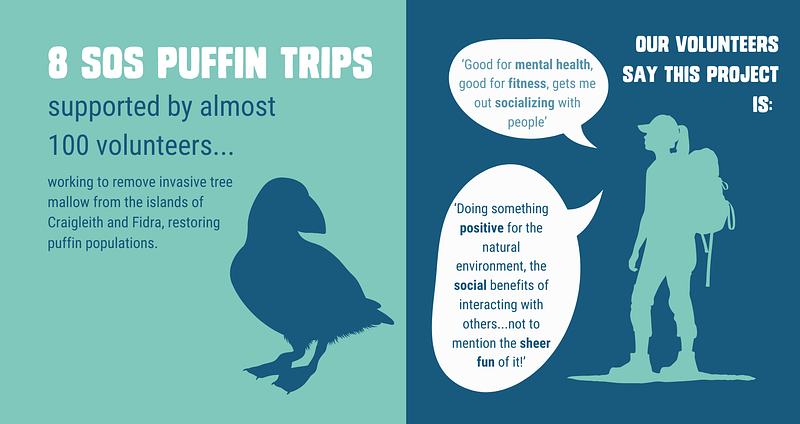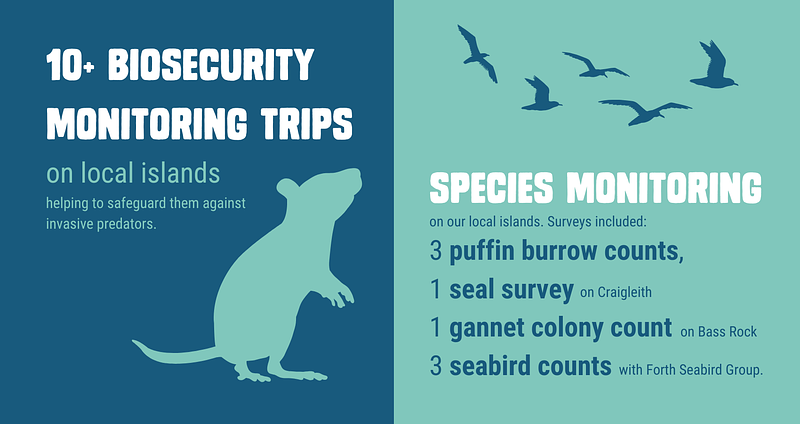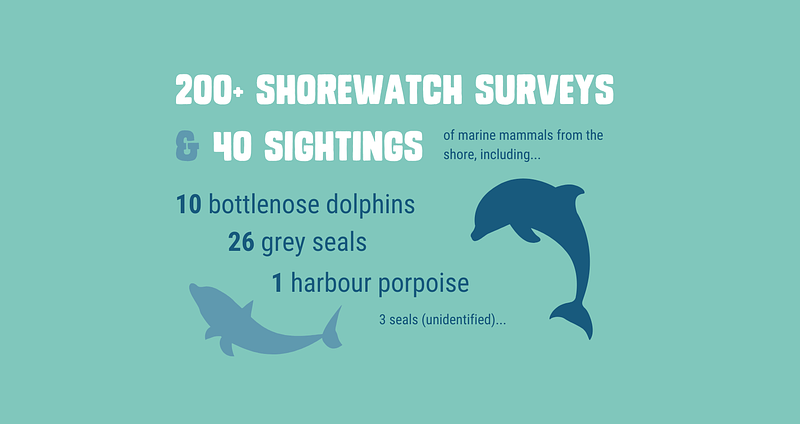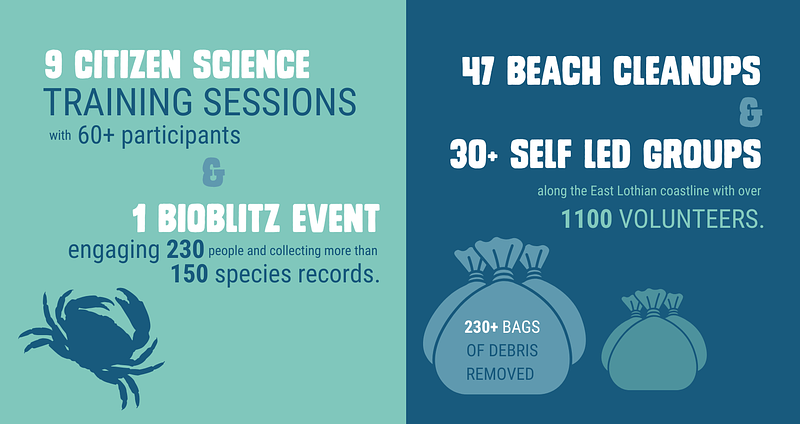.jpg)
Conservation Highlights of 2024
By Emma Marriott, Conservation Officer
And so concludes another fantastic year in conservation at the Scottish Seabird Centre! Soon, the seabirds will start their slow return, and winter will subside to spring then leap into summer. As we welcome in 2025 with open minds and optimism, join us in taking a few moments to appreciate all that’s been achieved and look back at some of our conservation highlights from the year gone by…
SOS PUFFIN

It’s incredible to think it has been 17 years since the project first picked up tools and we set about tackling tree mallow on the local islands. A giant plant which grows up to nine feet tall, tree mallow reached Fidra – an RSPB reserve – and Craigleith in the 1990s and spread rapidly. By 2007 it smothered much of the islands (covering more than 85% of Craigleith), choking puffin burrows and preventing the birds from nesting and rearing their chicks (known as pufflings).
Now, with the help of over 1000 volunteers since the project began, the tree mallow has since been brought under control. In fact, the tree mallow control work that used to take countless work parties each season now takes only a few each year, and our puffin populations have soared! From less than a thousand pairs on Craigleith before the project began, breeding numbers in 2024 were over 5000 pairs (recorded as ‘Apparently Occupied Burrows’, AOBs) and nearly 1000 on Fidra!
The Lamb is a tricker island to get to by regular boat, but with the invaluable help of volunteers in the Lothian Sea Kayak Club the tree mallow continues to be hacked back and the puffin population is now close to 800 AOBs!
Thank you to all our fabulous volunteers and our project partners at RSPB Scotland for all your help.
SEABIRDS

Puffins weren’t the only species we were watching out for this year!
We love working alongside the Forth Seabird Group, who venture out every year to the islands in the Firth of Forth to count the wealth of seabirds that call these islands home over the summer. The information gathered lets us see how many breeding seabirds of each species are using the islands, which we can compare from year to year to give an important impression of how our seabirds are faring in the Firth of Forth.
Sadly, whilst puffins may be doing well here, the overall findings from 2024 reflect the declines in seabird populations witnessed throughout Scotland. The good news is that something can still be done about it! In December, a Scottish Seabird Conservation Action Plan was drafted detailing priorities for increasing the resilience of our seabird populations and how we can work collaboratively to conserve them. You can find out more and have your say in the consultation HERE.
Last year we were excited to partner with The University of Edinburgh’s School of Geosciences and the UK Centre for Ecology & Hydrology to conduct a colony count of the Bass Rock gannetry using imagery from a state-of-the-art drone. The count confirmed a reduction in the population by 31% since the previous count in 2014, evidencing the high mortalities seen during the 2022 outbreak of Avian Flu. In 2024, we teamed up once more to gather footage for another count, which is currently in the process of being analysed. Stay tuned in 2025 for the results!
MARINE MAMMALS

Every autumn and winter, a small but beautiful population of Grey seals congregate on Craigleith island to give birth to a handful of fluffy white pups! To monitor how the local population is faring, the Conservation Team venture out to the island and count the pups. We have to be very careful not to disturb them or their mothers, so only 2 or 3 of us access the island and we use binoculars to count from afar.
“It’s a real treat and a privilege to help survey these seals. They’re so important for our marine ecosystems—and the sounds they make are just magical!”
This year we could only do one trip, but by using the live webcams (which you can view online or in our Discovery Experience!) we have managed to get a rough idea of how many pups were born in 2024. We pass this information on to the Fife Seal Group, who study seal populations in the Forth and Tay estuaries.
We also continued to support the North Berwick Shorewatch site. Shorewatch is a project run by Whale and Dolphin Conservation and involves recruiting volunteers to survey for whales and dolphins. In 2024, volunteers in North Berwick carried out 200+ surveys, during which they spotted dolphins, porpoises and seals! Why not join us in 2025 and see what you can spot?
TACKLING POLLUTION

It’s not as glamorous a task as counting seals or seabirds but—nevertheless—over 1100 of you have joined us on the beach this year to rid the coast of rubbish! From Spring Cleans with Keep Scotland Beautiful in Musselburgh to huge community efforts to remove the debris washed up by Storms like Babet in North Berwick, you’ve been working tirelessly to keep East Lothian’s coastline clean for nature. With your help, we removed over 230 bags full of marine debris in 2024!
We also worked closely with the Scottish Coastal Cleanup throughout the year. A project tackling marine pollution around Scotland and connecting communities in the process, their tireless team have removed tonnes of debris, including nearly 3 tonnes of tangled, storm-tossed creels from Fidra with support from RSPB Scotland, the Scottish Seabird Centre and volunteers.
Each year, many animals are killed or injured when they swallow or become entangled in litter. By removing it, we’re helping save wildlife one piece at a time.
THANK YOU!
Many thanks again to all our wonderful volunteers and partners for all your incredible support. We’re looking forward to working with you again in 2025 and to forging new partnerships and projects to protect nature!
